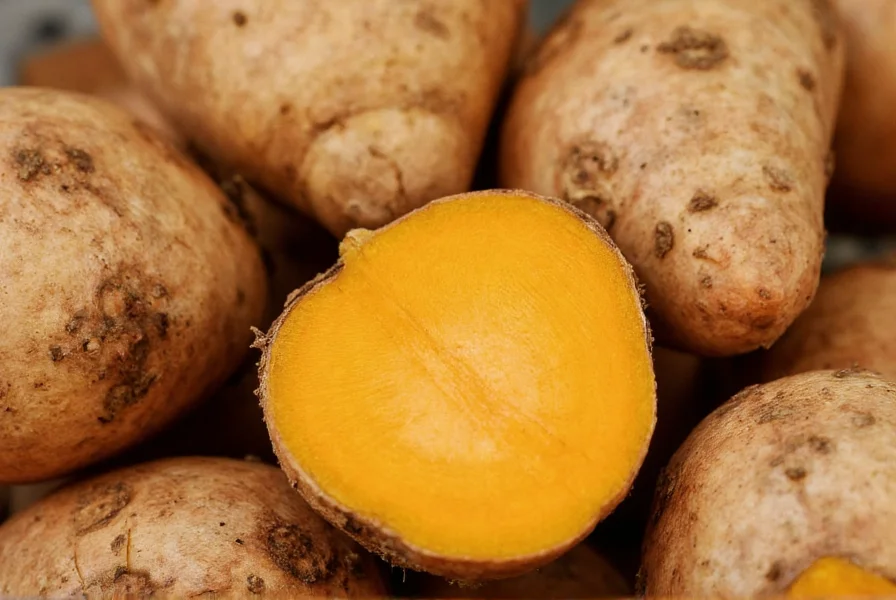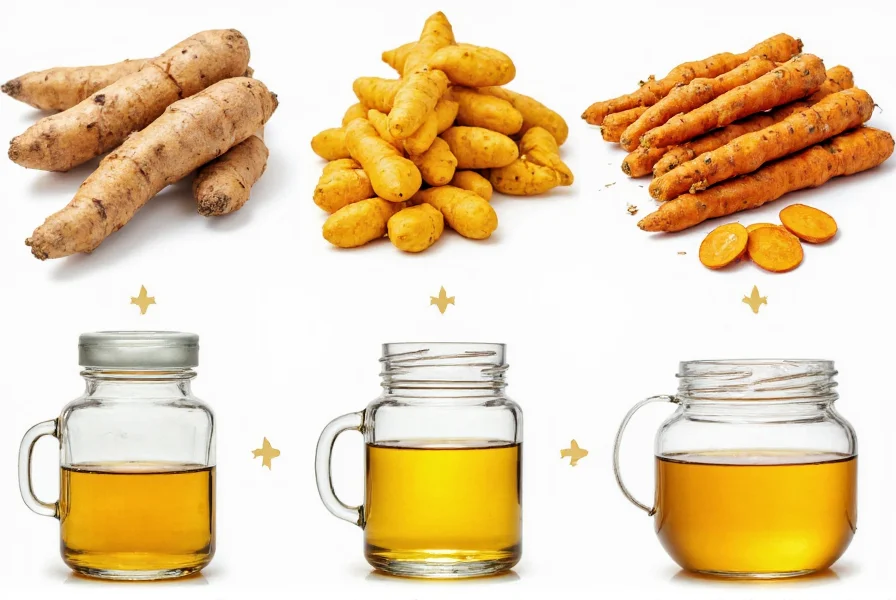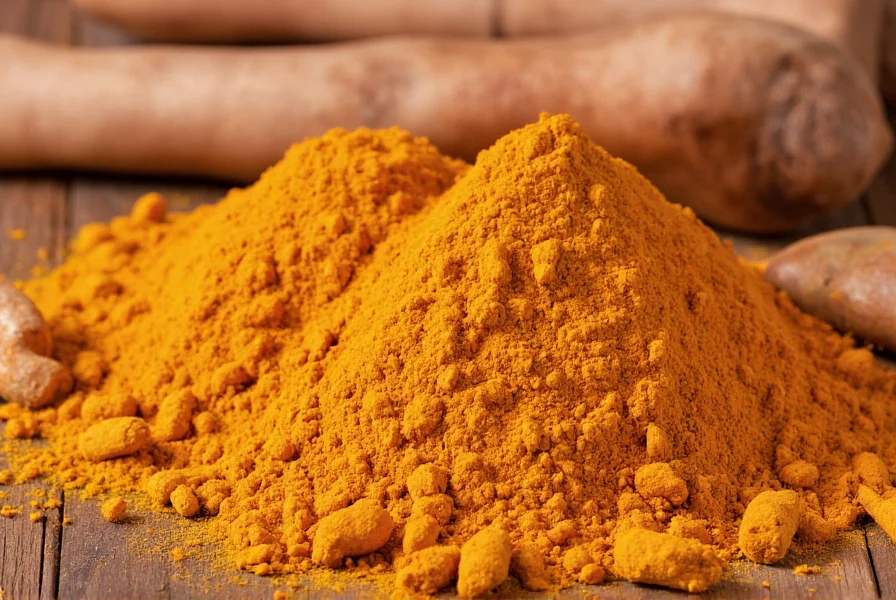When selecting fresh turmeric at your local market, look for firm, plump roots with smooth skin and minimal wrinkles. The vibrant orange-yellow flesh inside indicates high curcumin content, while dried turmeric powder typically loses 15-20% of its active compounds during processing. Understanding these differences helps maximize both flavor and health benefits in your daily routine.
What Makes Fresh Turmeric Unique
Fresh turmeric (Curcuma longa) refers to the unprocessed rhizome harvested directly from the plant. Unlike its powdered counterpart, fresh turmeric maintains its complete chemical profile, including essential oils like turmerone that get lost during drying and grinding. These compounds contribute to both the distinctive earthy flavor and enhanced bioavailability of curcumin, turmeric's primary active component.
Many people wonder how much fresh turmeric equals one teaspoon of powder. The conversion ratio is approximately 1 inch of fresh root to 1 teaspoon of powder. This knowledge proves invaluable when adapting recipes or calculating therapeutic doses for wellness purposes.

Fresh vs Dried Turmeric: Nutritional Comparison
The drying process significantly impacts turmeric's nutritional profile. While both forms contain curcuminoids, fresh turmeric preserves additional beneficial compounds that degrade during processing. This difference affects both culinary applications and potential health benefits.
| Characteristic | Fresh Turmeric Root | Turmeric Powder |
|---|---|---|
| Curcumin Content | 3-5% by weight | 2-3.5% by weight |
| Volatile Oils | Present (turmerone, zingiberene) | Mostly lost during processing |
| Shelf Life | 2-3 weeks refrigerated | 1-2 years when stored properly |
| Bioavailability | Higher when consumed with fat | Requires black pepper for optimal absorption |
Selecting Quality Fresh Turmeric
When choosing fresh turmeric roots, examine these key characteristics:
- Firmness: Gently squeeze the root; it should feel solid without soft spots
- Color: Look for bright orange-yellow skin with minimal blemishes
- Size: Smaller roots (1-3 inches) often have more concentrated flavor
- Moisture: Avoid roots with excessive dryness or shriveling
Many grocery stores now carry fresh turmeric in the produce section, particularly Asian markets and health food stores. If you're searching where to buy fresh turmeric near me, check local farmers' markets during spring and summer when it's in season.
Proper Storage Techniques for Maximum Freshness
Understanding how to store fresh turmeric root properly extends its shelf life significantly. For short-term storage (1-2 weeks), place unwashed roots in a paper bag in your refrigerator's crisper drawer. For longer preservation, submerge cleaned roots in vodka or vinegar in an airtight container—this method maintains potency for up to three months.
Freezing provides another excellent option for preserving fresh turmeric. Simply peel, grate, and freeze in ice cube trays with coconut oil. These turmeric cubes work perfectly for adding to smoothies or cooking, addressing the common question of how to preserve fresh turmeric for cooking.

Preparing and Using Fresh Turmeric
Preparing fresh turmeric requires minimal equipment. Use a vegetable peeler or the edge of a spoon to remove the thin skin. The vibrant orange flesh stains easily, so wear gloves during preparation. Grate fresh turmeric using a microplane for smooth incorporation into dishes.
Chefs often ask what does fresh turmeric taste like compared to powder. Fresh turmeric offers a brighter, more complex flavor profile with subtle citrus notes and less bitterness than dried powder. This makes it particularly valuable in raw applications like salad dressings, smoothies, and fresh juices where powder might create texture issues.
Health Benefits Specific to Fresh Turmeric
Research suggests fresh turmeric may offer enhanced health benefits due to its complete phytochemical profile. The volatile oils preserved in fresh roots appear to work synergistically with curcumin, potentially improving absorption without requiring black pepper—a common question among health-conscious consumers.
When considering fresh turmeric nutritional value versus powder, note that fresh roots contain higher moisture content but deliver more complete nutrition. For therapeutic applications, many practitioners recommend 1-3 inches of fresh root daily, equivalent to 500-2000mg of standardized curcumin supplements.
Practical Culinary Applications
Fresh turmeric shines in both traditional and modern cuisine. Try these applications:
- Add grated fresh turmeric to morning smoothies for enhanced absorption
- Create golden milk using freshly grated root instead of powder
- Infuse olive oil with turmeric for salad dressings
- Add to pickling brines for vibrant color and flavor
- Use in fresh curry pastes for authentic Southeast Asian dishes
When substituting fresh for dried in recipes, remember that fresh turmeric conversion to powder requires approximately three times more fresh root by volume to achieve equivalent flavor intensity.
Frequently Asked Questions
How much fresh turmeric equals one teaspoon of powder?
One inch of fresh turmeric root (about the size of your thumb) equals approximately one teaspoon of turmeric powder. This conversion helps when adapting recipes or calculating therapeutic doses for wellness applications.
Does fresh turmeric have more health benefits than powder?
Yes, fresh turmeric contains up to 20% more curcumin and preserves volatile oils lost during drying. These compounds work synergistically to enhance bioavailability and provide additional health benefits not found in processed powder.
How long does fresh turmeric last in the refrigerator?
Properly stored fresh turmeric lasts 2-3 weeks in the refrigerator when kept unwashed in a paper bag in the crisper drawer. For extended storage, submerging in vodka or freezing with coconut oil preserves potency for up to three months.
Can I substitute fresh turmeric for powder in recipes?
Yes, but adjust quantities accordingly. Use three times more fresh turmeric by volume to match the flavor intensity of powder. Fresh turmeric works particularly well in raw applications like smoothies and dressings where powder might create texture issues.
Why does fresh turmeric stain more than powder?
Fresh turmeric contains higher moisture content and more concentrated curcuminoids, making it more prone to staining surfaces and skin. Wearing gloves during preparation and cleaning surfaces immediately with soapy water prevents permanent stains.











 浙公网安备
33010002000092号
浙公网安备
33010002000092号 浙B2-20120091-4
浙B2-20120091-4